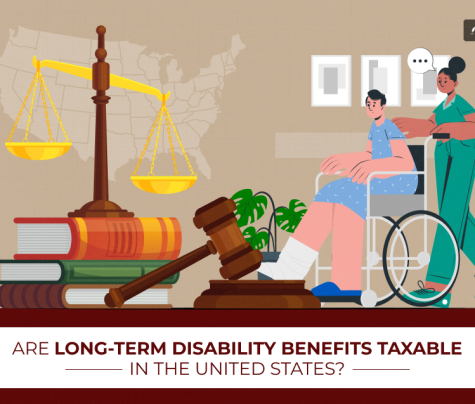
Road traffic injury is a public health issue in nearly every country, with immeasurable human morbidity and economic burden.
Road accidents lead to injury or fatality of millions of individuals each year, and road safety, therefore, becomes a concern of policymakers, governments, and the public.
It is basic knowledge to know the cause and evading it to avoid such deaths and injuries to reduce such types of injury and death to a great extent.
The Global Burden Of Road Traffic Injury
Road traffic injury is one of the principal causes of death and disability globally. Approximately 1.3 million persons die on the roads each year, while tens of millions more sustain serious injuries.
Road accidents destroy the lives of unprotected road users such as motorcyclists, pedestrians, and cyclists. Road accidents also impose an enormous economic loss on nations in terms of an estimated 3% of world GDP annually.
Low and middle-income countries must bear this expense, and over 90% of road traffic fatalities occur even if there are fewer vehicles on the road than in high-income countries.
Road safety is one of the pillars of attaining sustainable development goals and saving lives from premature fatalities.
Common Causes Of Road Traffic Injury
Before talking about the road traffic accident compensation, you need to know about the causes.
There are some reasons for road traffic injury, which can be intervened and prevented simply.
1. Excessive Speeding
Overridden vehicles are more likely to increase the risk and severity of crashes. The higher the speed, the slower the driver’s reaction and the greater the force of impact, which usually causes severe or lethal injury.
A rise in speed of 1% has been calculated to be equivalent to a 4% greater risk of fatal crashes. Government measures against speeding include speed limits, speed cameras, and road-calming devices like road humps and roundabouts.
2. Drunk Driving Following Alcohol and Other Psychoactive Substance Use
Alcohol and drugs slow down the reaction time, coordination, and judgment of a driver.
Thereby elevating their chances of an accident. Drunk driving causes the vast majority of fatalities on roads around the world.
Effective measures to deter drunk driving involve strict blood alcohol concentration (BAC) limits, road sobriety checks at mandatory stops, and anti-drunken driving campaigns.
3. Failure To Wear Motorcycle Helmets, Seatbelts, And Child Restraints
Wearing helmets, seatbelts, and child restraints reduces the severity of road crash injuries.
Evidence indicates that helmets reduce the risk of head injury by approximately 70%, and seatbelts reduce the risk of fatal injury by 45-60%.
Governments can make helmet and seatbelt use compulsory, promote it with public education, and enforce it with fines.
4. Distracted Driving
The prevalent use of automobile entertainment and cellular phone equipment has increased distracted driving. Whose impact significantly improves opportunities for accidents.
Navigation program usage, dialing, or messaging diverts eyes from the road, reducing the response rate.
Hand-free cell phone operation, cell phone usage restriction legislation, and public awareness campaigns can reverse it.
5. Inherently Risky Road Infrastructure
Poor roads, lack of pedestrian crossings, inadequate lighting, and poor roads are some of the reasons for road accidents.
Proper investment in high-quality road infrastructure, such as independent bicycle lanes, pedestrian flyovers, and properly designated traffic signs, enhances road safety.
Road checks and adherence to international standards also enhance road conditions.
6. Unsafe Vehicles
Motor vehicle safety equipment like airbags, anti-lock braking systems (ABS), and electronic stability control (ESC) are technologies that reduce the severity of crashes. Such motor vehicles do not exist in developing countries.
Further regulation of motor vehicle production, compulsory testing of motor vehicles, and subsidies for safer motor vehicle purchases can prevent injuries and fatalities in crashes.
7. Inadequate Post-Crash Care
Timely and quality medical attention is the key to survival in road accidents. Most of the victims are disabled for life or are killed due to inefficient emergency response services.
Implementing trauma care units, equipping some medical facilities with ambulances, and training first responders can be vital keys to survival in accidents.
Encouraging first-aid training among onlookers and placing emergency response numbers also enhances accident response.
8. Lax Enforcement Of Road Rules
Lax enforcement of road rules allows for dangerous driving habits like speeding, drunk driving, and seatbelt non-wearing to pass unnoticed.
Strict enforcement, supplemented by technology, such as automatic speed cameras and red-light cameras, discourages dangerous driving habits. Road rule education campaigns also promote safe driving habits.
Road Traffic Accident Compensation: When And Where Can You Claim Compensation?
The Motor Vehicles Act, 1988, provides compensation based on medical expenses, pain and suffering, loss of income, and damages for loss of amenities of life.
The compensation can be claimed as fast as possible after the accident. For that, you have to file a claim with the MACT of the jurisdiction based on the area of the accident or where the claimant lives.
Road Safety Initiatives And Preventive Measures
A strong road safety system includes education, road design, and effective law enforcement. Preventive interventions of the highest priority are:
- Public Awareness Campaigns: Education to drivers, pedestrians, and cyclists about safe driving and road behavior through media and community interventions.
- Driver Training and Licensing in Large Numbers: Provision of stricter preconditions for issuing driver’s licenses, including defensive driving training and simulator training.
- Enhanced Road Design: Constructing safe roads with enhanced signs, lighting, and traffic separation systems.
- Enhanced Vehicle Safety Standards Enforcement: Encouraging production of safer vehicles with enhanced safety features.
- Enhanced Emergency Response System: Offering enhanced post-crash care through enhanced ambulances, hospital trauma centers, and first responders.
Collaboration And Policy Making
Road safety should be addressed through an international partnership of governments, international organizations, the private sector, and civil society.
The policymakers will bring and revise road safety laws based on evidence-based reports from time to time.
The United Nations Decade of Action for Road Safety provides a strategic plan to reduce road fatalities worldwide through legislation, enforcement, and investment in roads.
The countries must also invest enough in road safety and include road safety in sustainable development plans.
Wrapping It Up!
Road trauma remains a global problem, but the good news is that it can be reduced to near zero by evidence-based strategies and collaboration.
Tight road traffic legislation, investment in road safety-friendly infrastructure, encouragement of a defensive driving culture, and emphasis on good driving etiquette must address documented risk factors.
The government, police, and people need to unite in preventing traffic injury incidences to save lives and allow everybody to move freely. Road safety should be a priority today to save hundreds of lives tomorrow.
Read Also:
- DUI Defense Strategies That Can Minimize The Impact of DWI Charges
- How Minneapolis DWI Lawyers Can Help You Win Your Case
- Five Tips To Help You Recover After A Work Injury










0 Reply
No comments yet.